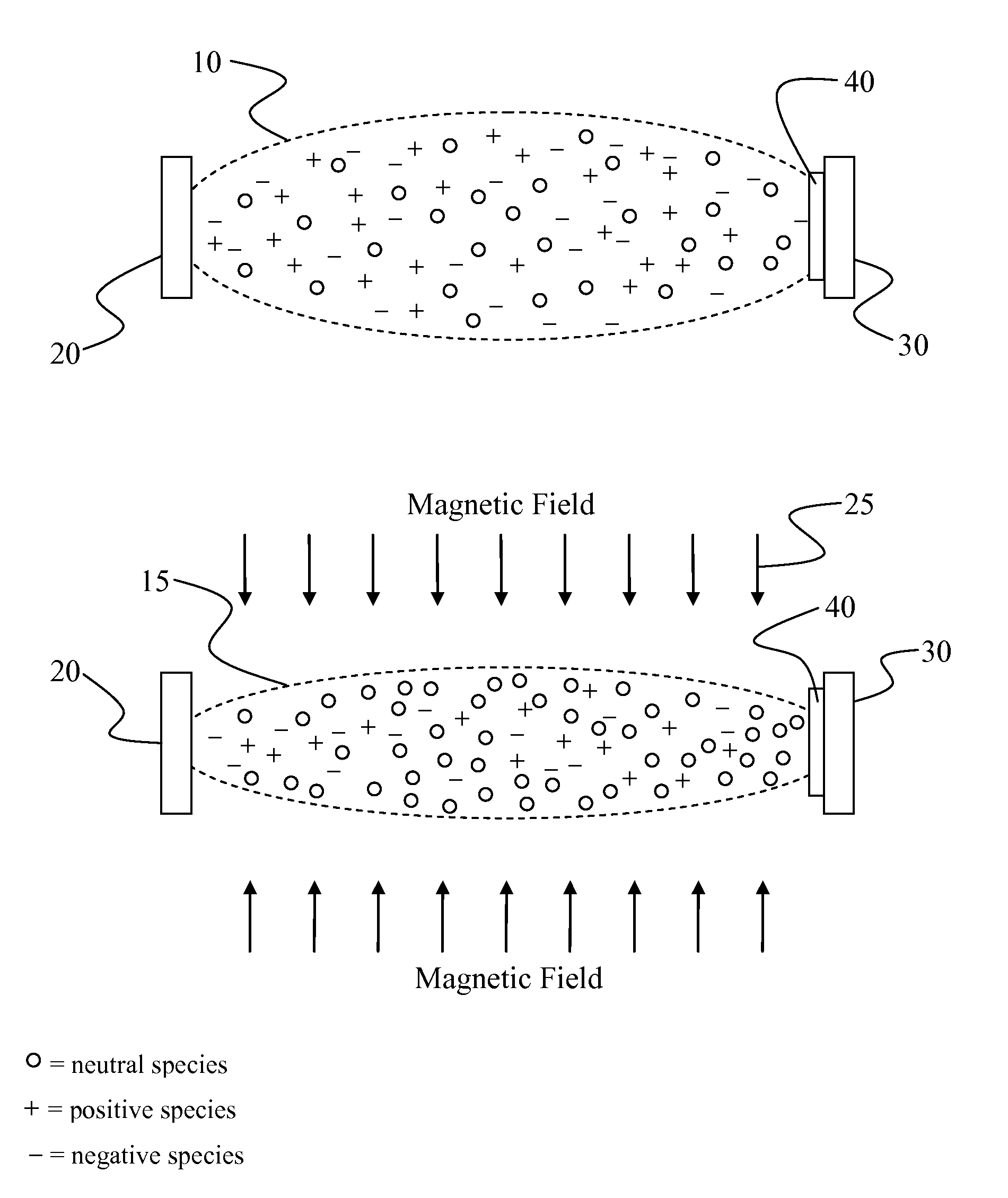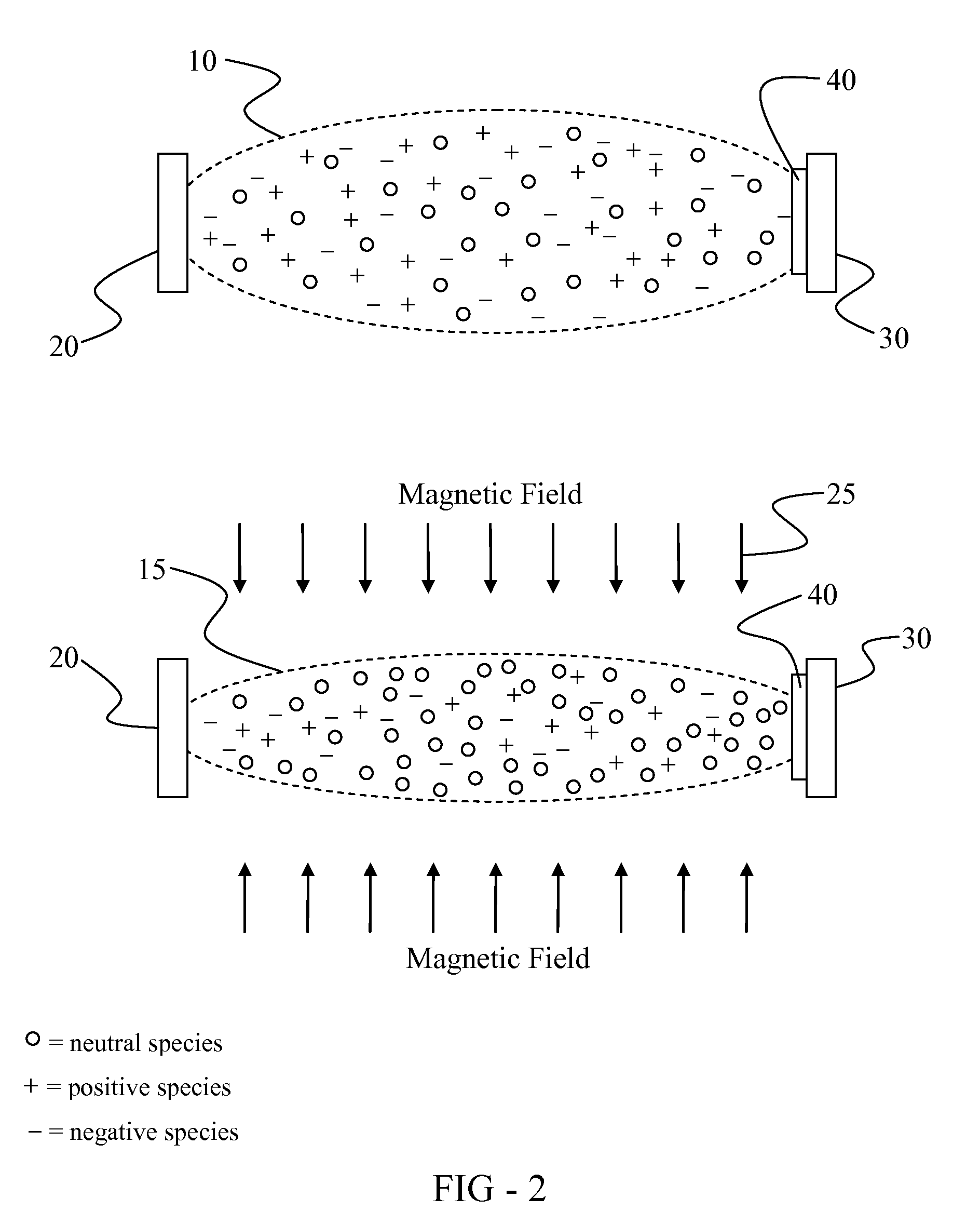Thin film deposition via charged particle-depleted plasma achieved by magnetic confinement
a technology of magnetic confinement and thin film, applied in the direction of plasma technique, chemical vapor deposition coating, coating, etc., can solve the problems of thin film products, rigidity and inability to carry heavy weight, and low separation between plasma constituents, so as to facilitate extinguishing or depletion, reduce the effect of separation and reduction of separation
- Summary
- Abstract
- Description
- Claims
- Application Information
AI Technical Summary
Benefits of technology
Problems solved by technology
Method used
Image
Examples
Embodiment Construction
[0025]Although this invention will be described in terms of certain preferred embodiments, other embodiments that are apparent to those of ordinary skill in the art, including embodiments that do not provide all of the benefits and features set forth herein and including embodiments that provide positive benefits for high-volume manufacturing, are also within the scope of this invention. Accordingly, the scope of the invention is defined only by reference to the appended claims.
[0026]The instant invention focuses on a plasma deposition process in which the state of the plasma is engineered to optimize the structural and electronic quality of an as-deposited thin film material. In one embodiment, the thin film material is a photovoltaic material. The invention is designed to remedy conditions present in plasmas used in conventional plasma deposition processes that impair the performance of an as-deposited photovoltaic material.
[0027]In a plasma deposition process, a plasma is normall...
PUM
| Property | Measurement | Unit |
|---|---|---|
| magnetic field | aaaaa | aaaaa |
| concentration | aaaaa | aaaaa |
| defect concentration | aaaaa | aaaaa |
Abstract
Description
Claims
Application Information
 Login to View More
Login to View More - R&D
- Intellectual Property
- Life Sciences
- Materials
- Tech Scout
- Unparalleled Data Quality
- Higher Quality Content
- 60% Fewer Hallucinations
Browse by: Latest US Patents, China's latest patents, Technical Efficacy Thesaurus, Application Domain, Technology Topic, Popular Technical Reports.
© 2025 PatSnap. All rights reserved.Legal|Privacy policy|Modern Slavery Act Transparency Statement|Sitemap|About US| Contact US: help@patsnap.com



